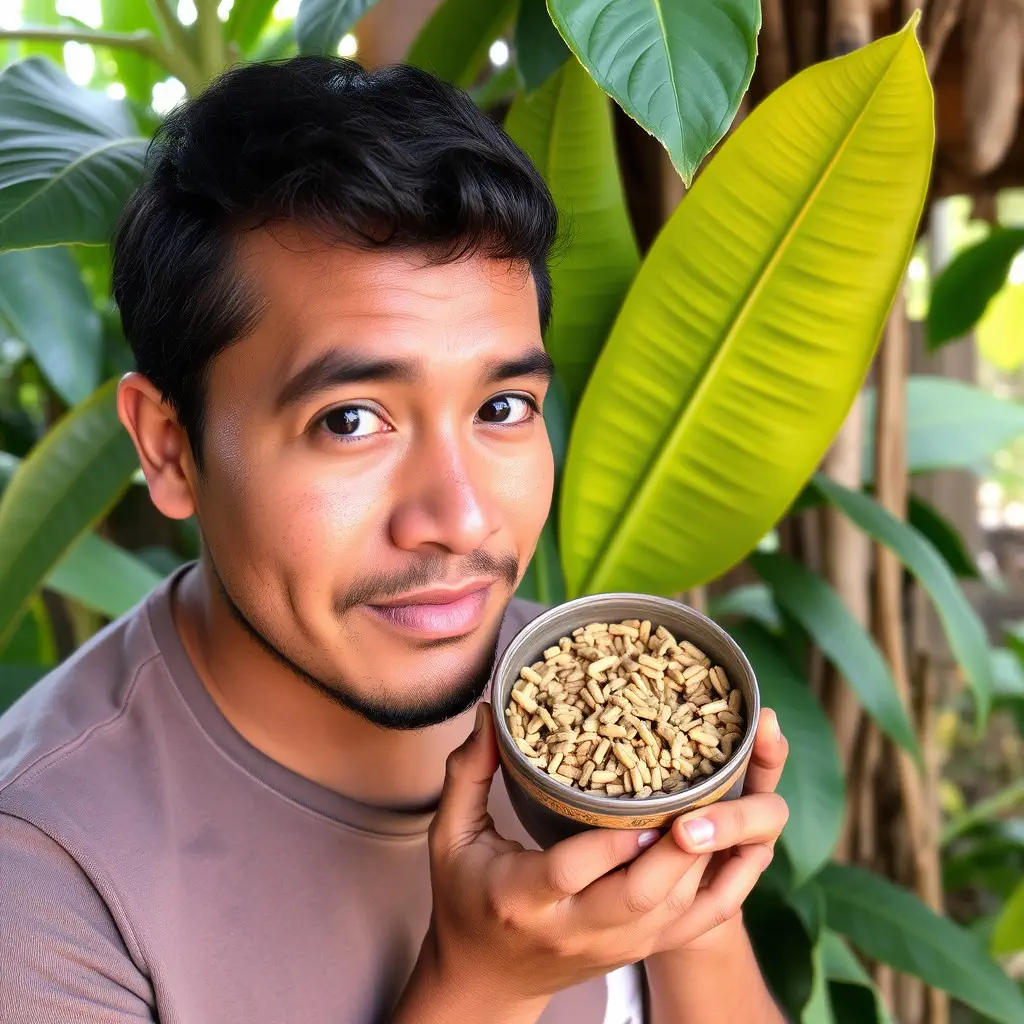Kratom from the Mitragyna speciosa plant, which originates from Southeast Asia, has become a topic of interest for athletes and fitness enthusiasts due to its potential benefits for post-workout recovery. Its active alkaloids, mitragynine and 7-hydroxymitragynine, may help manage pain by interacting with the brain's opioid receptors, reducing fatigue and aiding muscle recovery between training sessions. Additionally, kratom is associated with mood enhancement, which could support athletes in maintaining a positive psychological state for sustained performance. The combination of kratom with barberry root tea, known for its anti-inflammatory and detoxifying properties due to berberine content, may offer enhanced muscle repair and pain management benefits. This synergy potentially reduces inflammation and discomfort from muscle strain or injury while stimulating protein synthesis, essential for muscle repair after intense physical activity. For safe usage, it is imperative to follow recommended dosages and consult healthcare professionals, considering individual health differences and potential interactions with other substances or medications. The legal status of kratom should also be verified before use. This approach complements fundamental recovery strategies like adequate rest, proper nutrition, and hydration for a holistic recovery experience. Barberry root tea's traditional use in herbal medicine supports the pain management effects of kratom and contributes to overall well-being, making it a valuable addition to a post-workout recovery regimen.
exploration of kratom’s role in post-exercise recovery unveils a promising synergy, particularly when paired with barberry root tea. This article delves into the intricate mechanisms behind these natural substances and how they can enhance muscle repair and alleviate pain. We’ll guide you through an effective, holistic recovery routine, incorporating kratom and barberry root tea, to optimize your body’s recuperative processes following intense training sessions. Join us as we navigate the potential benefits of these traditional remedies in a modern fitness context.
- Unraveling the Synergy Between Kratom and Training Recovery Strategies: An Overview
- Enhancing Muscle Repair and Pain Management with Kratom and Barberry Root Tea Combinations
- Integrating Kratom into a Holistic Post-Workout Recovery Routine: A Step-by-Step Guide
Unraveling the Synergy Between Kratom and Training Recovery Strategies: An Overview

Kratom, a naturally occurring plant from Southeast Asia, has garnered attention within athletic and fitness communities for its potential recovery-enhancing properties. When integrated into training recovery strategies, kratom may offer multifaceted benefits that align with the body’s physiological demands post-exercise. Its alkaloids, particularly mitragynine and 7-hydroxymitragynine, are believed to interact with opioid receptors in the brain, potentially modulating pain perception and reducing fatigue, which can be advantageous for athletes seeking accelerated recovery between training sessions. Moreover, kratom is often associated with mood elevation, which could contribute to a more positive psychological state conducive to sustained performance and recovery over time.
In parallel with the physical aspects of recovery, kratom’s influence on stress response may also play a role in mitigating the negative effects of overtraining. This is particularly relevant when combined with other natural remedies such as barberry root tea, which has been traditionally used to support liver health and digestion, further facilitating the body’s detoxification processes. The synergy between these two elements can create a more holistic approach to recovery, addressing both the physical strain and the mental fatigue that can accompany intensive training regimens. Users should approach the integration of kratom into their recovery strategies with caution, however, as its effects can be potent and vary widely among individuals. It is essential to consult with a healthcare provider before incorporating kratom into any health or fitness regimen, ensuring safe and effective use in conjunction with other recovery practices.
Enhancing Muscle Repair and Pain Management with Kratom and Barberry Root Tea Combinations

Integrating kratom with barberry root tea can serve as a dual-faceted approach to enhance muscle repair and manage pain effectively. Kratom, derived from the leaves of Mitragyna speciosa, is recognized for its alkaloid content, which interacts with the brain’s opioid receptors, potentially offering relief from chronic and acute pain. When combined with barberry root tea, which contains berberine compounds known for their anti-inflammatory properties, the synergistic effect can further reduce inflammation and discomfort associated with muscle strain or injury. This combination may also stimulate muscle growth by promoting protein synthesis, a critical factor in muscle repair following intense physical activity or training.
For those seeking natural alternatives to manage pain and support recovery, the combination of kratom and barberry root tea is particularly noteworthy. Barberry root tea, often praised for its traditional use in herbal medicine, may also aid in detoxifying the body and improving overall vitality, which can complement the analgesic effects of kratom. When incorporating these remedies into a recovery strategy, it is essential to adhere to recommended dosages and consult with healthcare professionals to ensure safe usage, especially considering individual health differences and the potential interactions with other substances or medications. Users should also be mindful of the legal status of kratom in their jurisdiction before use. Proper rest, balanced nutrition, and consistent hydration remain foundational elements of a comprehensive recovery strategy, complementing the pain management and muscle repair benefits provided by this natural blend.
Integrating Kratom into a Holistic Post-Workout Recovery Routine: A Step-by-Step Guide

When it comes to post-workout recovery, a holistic approach often incorporates a variety of strategies to address both physiological and psychological needs. Kratom, derived from the leaves of Mitragyna speciosa, has gained attention for its potential role in aiding recovery due to its alkaloids that may influence the body’s response to stress and exertion. To integrate kratom into your post-workout routine effectively, it’s important to consider dosage and timing based on individual sensitivity and the specific strains of kratom used. A step-by-step guide to this process ensures safety and efficacy.
Begin by assessing your workout intensity and recovery goals. After an intense training session, consume a kratom dose typically ranging from 2 to 6 grams, depending on tolerance and the desired effects. The most commonly used strains for post-workout recovery are Maeng Da and Bali, known for their balancing properties that may help alleviate pain and inflammation. To complement kratom’s action, incorporate barberry root tea into your routine. Barberry root contains berberine, an active compound with anti-inflammatory and antioxidant properties. This synergistic combination can enhance the body’s natural healing processes while promoting overall well-being. Ensure you consult with a healthcare provider before integrating kratom into your recovery routine, as it can interact with other substances and may not be suitable for everyone. Always stay hydrated and consider dietary adjustments that support muscle repair and growth, such as including protein-rich foods and maintaining a balanced electrolyte intake to replenish what was lost during your workout.
In conclusion, the integration of kratom within training recovery strategies, particularly when combined with barberry root tea, presents a promising avenue for athletes and fitness enthusiasts seeking to enhance muscle repair and manage post-exercise pain. This article has delineated the synergistic effects of these substances and provided a comprehensive guide on incorporating them into a holistic post-workout routine. By understanding the nuances of their use, individuals can leverage kratom’s alkaloids and barberry root tea’s healing properties to effectively aid in recovery processes. It is imperative for users to approach such strategies with caution, adhering to safe dosage guidelines and consulting healthcare professionals as needed. With careful consideration and responsible usage, kratom and barberry root tea can be valuable components of a well-rounded recovery regimen, contributing to the overall wellbeing and performance of those engaged in rigorous training.






